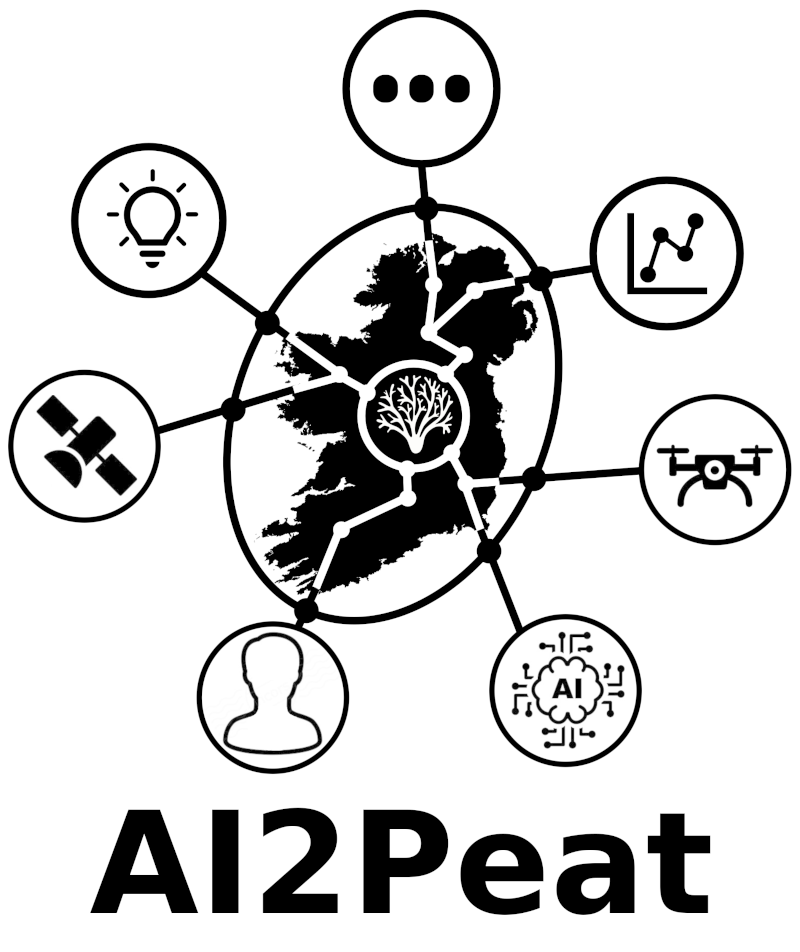Introduction
Soon after the start of the project, SFI provided us with three brilliant courses: theory of change, design thinking 1, and evidence-based entrepreneurship. The common topic of all courses was stakeholder engagement. SFI encouraged us not to focus on the solution we proposed back in Autumn 2022 but, rather, reach out, find as many stakeholders as possible, interview them, and understand their challenges and needs. Only then we could observe emerging patterns which could help us shaping our solution in a way to bring a meaningful impact. So we did!
AI2Peat’s Stakeholder Network
First, we relied on our team member’s existing network to initialise our stakeholder registry. Then, we setup an interview script in order to ask the same questions to all interviewee and to better analyse their answers. The three core questions were:
- What are the biggest challenges you face?
- What do you think is needed to solve or at least mitigate the challenges?
- Could you please give us at least 3 contacts we should interview (and why)?
Thanks to the third question we could leverage our stakeholders’ own network to expand ours. At the end of the CONCEPT phase our network is composed of 113 nodes. We interviewed 32 stakeholders, the vast majority of which just in March (25 of them). Not a bad start!

We also identified 8 macro categories which could help us cluster our network:

Although we tried to diversify our pool, it is not too surprising most of our stakeholders belong to the “Research & Education” category. That’s partly because our very project is applied research work – hence we mainly targeted people who do similar work to ours, also not to overlap efforts. We will put extra effort in better balancing our stakeholder demographics.
What are the Emerging Challenges and Needs?
After manually extracting all challenges and needs we identified from the interviews, we further categorised them into 17 macro challenges and needs. The 5 most mentioned challenges are:
- information flow (intra- and inter-stakeholder category, 43%). One big issue with peatland-related intitiatives (across all 8 stakeholder categories) is the tendency to be “alone together”. Information does not flow seamlessly
- research continuation (39%). A lot of peatland-related projects are short lived (usually up to 3 years) compared to the timescales required to evaluate their impact on the wetlands (decades). Moreover, when projects end, it is often hard to get a hold on them again, see who did what, how, and where.
- conflictual policies (30%). This challenge is mainly related to encouraging private owners (e.g. farmers) to adopt peatland restoration measures. There’s a need to build trust between farmers and policy makers, and contraddicting policies, coming from different ministeries or in time, do not help with that.
- data sharing/privacy (30%). Peatlands are extremely complicated to monitor and model, because they are a complex adaptive system and because their spatio-temporal scales are very large. Data is collected but hardly shared. Sometimes this data also contains sensitive information (e.g. land ownership boundaries) that should not be shared.
- the scaling issues related to in-situ measurements (24%). Although remote sensing e.g. satellite imagery can help with the spatial monitoring scaling issues, there is still a need for ground-truth measurements, as these are the only true proxies to peatland condition. But then again, in-situ measurements suffer from the spatio-temporal scaling issues!
All other less frequent challenges are however related to these main ones. For instance, 11% of interviewees mentioned the “who does what?” challenge – which is easily relatable to information flow -, or “data standardisation” (20%), which clearly relates to data sharing/privacy.
For what it concerns the needs, the 3 most cited needs are “connecting with policy makers” (44%) which pairs the related “conflictual policies” and “information flow” challenges, “data standardisation” (30%) which matches the 2 aforementioned data challenges, and “connecting with farmers” (24%) which also relates to information flow (and policy-related challenges/needs).
We also relied on machine learning to create a word cloud from all interviews:

As it can be seen, a lot of terms – most notably “people”, “farmer“, “community” – hint at the need for a computational social science solution/help. Terms such as “year” and “time” clearly stress the need for research/effort continuation beyond project lives.
Conclusions
The challenges and needs obtained from the interviews thus far conducted showed a clear need for (1) responsible sharing (data, knowledge, etc.) and (2) reliable peatland condition monitoring at national level. These would then be discussed in an ideation workshop we held at the end of May, towards the end of the CONCEPT phase, to start scoping our solution.
Stay tuned for the next post, we will bring you a recap of the workshop!


Pingback: AI2Peat at the “Power to the Peatlands” Conference – AI2Peat
Pingback: AI2Peat Needs You! – AI2Peat
Pingback: PeatSense (beta) goes live! – AI2Peat